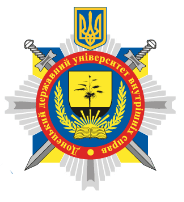ABOUT “STRATEGIC USE OF EVIDENCE” TO EXPOSE OF DECEPTION (FOREIGN STUDIES)
DOI:
https://doi.org/10.32782/2523-4269-2022-81-4-2-167-171Keywords:
foreign interrogation tactics, false testimony, exposure of deception, strategic use of evidence, criminalistics.Abstract
The article examines the foreign concept of determining the truth of testimony obtained during interrogation. The content and significance of the “Strategic Use of Evidence” technique proposed by foreign specialists, aimed at exposing deception, is revealed. A meaningful description of the level structure and certain principles of strategic use of evidence are given, which indicate the presence of cause-and-effect relationships between the results of the interrogation and the technique of recognizing false statements. It is indicated on the features of reporting information by different persons who speak true or false information. It is emphasized that the inconsistency and inconsistency of the testimony indicates the falsity of the testimony. The need for step-by-step disclosure of available evidence is comprehensively substantiated. As a result of the drip method of demonstrating evidence, the greatest result of exposing deception is achieved. In addition, within the scope of the article, an attempt is made to find out the methods of increasing the accuracy of detection of deception during the interrogation of a person. It has been found that interviewees who mislead the investigator and those who tell the truth use different speech strategies and use different beliefs. The technique of strategic use of evidence is based on the interrogator’s reflection on the demonstration of incriminating evidence. Emphasis is placed on changing the model of behavior of the interrogate, who hides reliable information, as an appropriate reaction to the demonstration of evidence of incriminating content. It is indicated that the technique of strategic use of evidence pursues the goal of improving existing tactical methods of interrogation in the direction of increasing the probability of recognizing unreliable testimony by identifying general patterns of behavior of persons who hide known information or resort to deception, as well as their typical reaction to the demonstration of incriminating evidence. At the end of the research, the expediency of implementing some of its provisions into domestic forensic theory and investigative practice is substantiated.
References
Bond C.F., Jr., & DePaulo B.M. Accuracy of Deception Judgments. Personality and Social Psychology Review, 2006. 10 (3), 214–234.
Vrij Aldert et al. Detection of concealment in an information-gathering interview: concealing intentions in interviews. Applied Cognitive Psychology. 28. 2014. 860–866.
Luke T.J., Hartwig M., Joseph E., Brimbal L., Chan G., Dawson E., Jordan S., Donovan P., & Granhag P.A. Training in the Strategic Use of Evidence technique: Improving deception detection accuracy of American law enforcement officers. Journal of Police and Criminal Psychology, 2016. № 31 (4). P. 270–278.
Carver C.S., & Scheier M.F. Self-regulatory perspectives on personality. / In H. Tennen, J. Suls, & I.B. Weiner (Eds.). Handbook of psychology: Personality and social psychology. 2013. P. 119–139.
Granhag Luke et al. Strategic Use of Evidence During Investigative Interviews: The State of the Science. Credibility Assessment. First Edition. 2014. P. 1–36.
Jakobsen K.K. Tolkning i forbindelse med politiafhøring. Problemer og mulige løsninger. Tolking i offentlig sektor. Vol. 2, No. 1. 2015. P. 1–14.
Hartwig M. Interrogating to detect deception and truth: Effects of strategic use of evidence : PhD dissertation. Sweden : Department of Psychology, Gothenburg University. 2005. 65 p.
Dando C.J., Bull R. Maximising opportunities to detect verbal deception: training police officers to interview tactically. Journal of Investigative Psychology and Offender Profiling. 2011. 8. P. 189–202.
Sorochinski M., Hartwig M., Osborne J., Wilkins E., Marsh J., Kazakov, D., & Granhag P.A. Interviewing to detect deception: When to disclose the evidence? Journal of Police and Criminal Psychology, 2014. 29 (2), 87–94.
Par A. Granhag, Leif A. Strömwall, Rebecca M. Willén, M. Hartwig. Eliciting cues to deception by tactical disclosure of evidence: The first test of the Evidence Framing Matrix. Legal and Criminological Psychology. 2012. P. 1–16.
Granhag Luke et al. Strategic Use of Evidence During Investigative Interviews: The State of the Science. Credibility Assessment. First Edition. 2014. P. 1–36.





